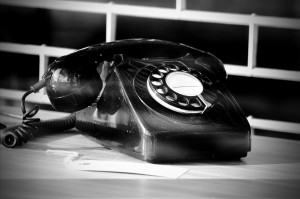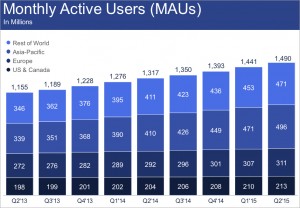By Morra Aarons-Mele
When anxiety is making you miserable, it’s easy to see it as an enemy that must be vanquished at all costs. But brain science reveals a different story.
The brain’s main job, quite literally, is to keep us alive. It does this not only by regulating things such as heart rate, blood pressure, and body temperature, but by constantly scanning our environment for potential threats. All of this occurs without our conscious awareness in the limbic system, thought to be the oldest, most primordial part of the brain.
The area of the limbic system we want to zero in on is a complex structure of cells called the amygdala. It’s here that our basic survival mechanisms meet up with our emotions—and not always favorably. Sometimes referred to as our “threat detector,” the amygdala processes fearful or threatening stimuli, triggering the fight, flight, or freeze response when it perceives danger. The amygdala also plays a role in attaching emotional significance to events, which helps encode them in memory. This is why it’s so much easier to remember things that are highly emotional, like the birth of a child or that epic fight with your partner—or an event that scares the crap out of you.
When your brain encodes frightening events into your long-term memory, it’s doing so out of a basic survival instinct: It wants you to avoid situations it perceives as dangerous. And because the amygdala is, evolutionarily speaking, such an old part of the brain, its core training occurred in a time when humans routinely encountered life-threatening dangers like saber-toothed tigers and wolf packs. Though most of us rarely encounter such perils today, this primitive part of our brain still sometimes acts—and reacts—as if we do. Quite simply, we’re wired for fear because we’re wired for survival.
But here’s the thing. Some of us have a hypervigilant amygdala, one that’s a little too excitable and overprotective. A bunch of us have an amygdala that’s both hypervigilant and trigger-happy, leaving us jumpy and prone to assuming that behind every rustling bush lurks a saber-toothed tiger, when it’s just the wind.
Famed psychologist Rollo May observed that “anxiety is essential to the human condition,” and he meant this quite literally. Anxiety exists to keep us from harm. But in the anxious individual, things can go haywire. “We are no longer prey to tigers and mastodons, but to damage to our self-esteem, ostracism by our group, or the threat of losing out in the competitive struggle,” May wrote back in 1977. “The form of anxiety has changed, but the experience remains relatively the same.” Christine Runyan, clinical psychologist and professor of medicine at the University of Massachusetts, agrees. “When we’re faced with any uncertainty, small-scale or large-scale, real or imagined, our threat appraisal system is activated,” she explains.
I want to underscore a key point Runyan makes for leaders: The threat appraisal system fires in response to any uncertainty. And what job doesn’t include uncertainty? Markets can be volatile, valued team members can resign, recessions can occur, pandemics can sweep the globe, supply chains can be disrupted. For many people, anxiety boils down to a fear of an uncertain future, and part of the responsibility of leadership is anticipating the future as best we can and making decisions that we hope will deliver desired outcomes. But, of course, there’s no guarantee. With so much uncertainty baked into the nature of leadership, it’s no wonder so many leaders operate from a baseline of heightened anxiety.
And there’s the rub. The amygdala can’t discern the difference between a threat that actually imperils our lives—the grizzly bear we stumble upon while hiking—and an event that just feels life-threatening, like presenting an earnings estimate to the board. Either way, if the brain detects anything it interprets as a threat, it will automatically launch the fight, flight, or freeze response. And when that happens, we experience the cascade of physical and emotional responses that are familiar to all of us: a pounding heart, rapid breathing, muscle tension and trembling, sweating, and possibly nausea or other digestive issues. Fear. This is the body’s way of readying us to fight a perceived enemy, run from it, or play dead in the hopes it will move on.
All of which is appropriate and very welcome when our lives or the life of someone we love is on the line—we need an enormous influx of adrenaline, speed, strength, and heightened focus if we stumble upon a grizzly bear. But those of us who experience excessive anxiety can feel this kind of five-alarm fear in response to events that aren’t life threatening at all. Once the brain, ever on a quest for efficiency, learns the neural pathways between a perceived threat and an activated threat appraisal system, it can become habituated to experiencing an anxiety response and sending our bodies into overdrive.
The brain’s automatic response creates one of the more frustrating aspects of anxiety: It is often irrational. We know it makes no sense to panic over the prospect of making small talk at a networking event, yet here we are in the corner, sweating and trembling and unable to rationalize our way out of it. Or we may find ourselves in a near-constant state of slightly elevated anxiety, gripped by worry and a vague sense of dread for no discernible reason.
Now, with all of this said, you may be wondering where I get off describing anxiety as a partner or a gift. It all goes back to the origins of anxiety: Its very reason for being is to keep us safe. So, anxiety itself is not our enemy. On the contrary, it was designed to be our friend and protector, to keep us out of harm’s way.
I’ve found it enormously helpful to remember this basic truth and to use it as the foundation from which to begin learning how to work with my anxiety, rather than fight a losing battle against it. When my anxiety starts to escalate, I remind myself that my brain isn’t broken and my anxiety isn’t out to take me down. My brain is actually functioning in a way that’s logical, expected, and even benevolent. It’s trying to protect me from a perceived threat.
When I can put a little distance between me and my anxiety, I can treat my anxiety more calmly, thank it for overachieving in trying to protect me, and ask myself what set it off. There is great benefit in adopting this intellectual and psychological shift, from seeing anxiety as an enemy to be exterminated to seeing it as an overeager friend who’s trying so very hard to help. You’ll start from a place of collaboration and, on a good day, maybe even gratitude.
If you are far from that point, that’s okay. Learning to live with anxiety as your friend and partner takes time. The good news is, just as your brain has learned the neural pathways for habitually launching an anxiety response, it can form new neural connections based on your choices, actions, and behaviors—a phenomenon known as neuroplasticity. That means we do not have to be helpless before our anxiety.
So, while you’re not going to think your way out of an anxiety disorder, you can take action that will change your thinking, which will in turn positively change your behavior and make your anxiety more manageable. No matter how entrenched your anxiety feels, it is always possible to change, improve, and learn new coping skills.
And that’s an area where we overachievers happen to excel.
Morra Aarons-Mele is the host of The Anxious Achiever and the founder of Women Online and The Mission List, an award-winning digital-consulting firm and influencer marketing company dedicated to social change, which she sold in 2021.
Reprinted by permission of Harvard Business Review Press. Excerpted from The Anxious Achiever: Turn Your Biggest Fears into Your Leadership Superpower by Morra Aarons-Mele. Copyright 2023 Morra Aarons-Mele. All rights reserved.

(11)





